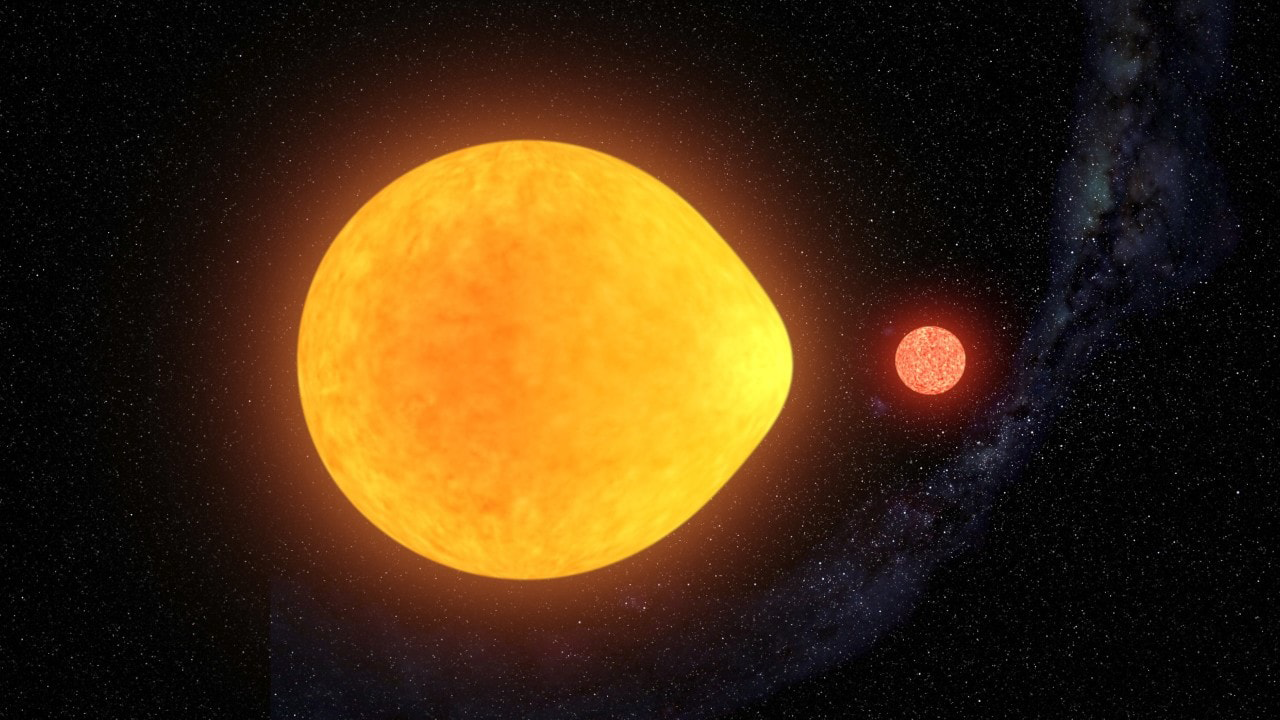After a 40-year search, astronomers have identified the first star shown to pulsate on only one side. Many kinds of stars, called variables, undergo natural pulsations, or periodic changes in brightness that are visible across the whole star. The newly observed star's pulsations, however, are largely confined to a single hemisphere. The reason for this one-sided pulsing: a small companion star, whose gravity pulls the pulsing star into a teardrop shape. This distortion alters the distribution of pulsations that would typically ripple evenly across a spherical star. See also: Gravity; Star; Variable star

Amateur (citizen) scientists discovered the pulsating star, designated HD74423, while perusing public data from the Transiting Exoplanet Survey Satellite (TESS). This satellite, launched in April 2018, observes hundreds of thousands of stars to detect tiny dips in brightness, often caused by exoplanets as they cross, or transit, a star's face as seen from TESS' vantage point. Besides transits, TESS also records other stellar brightness oscillations, caused by numerous natural cycles within stars and by their orbital arrangements with companion stars. See also: Exoplanet; The Transiting Exoplanet Survey Satellite (TESS) mission begins; Transit (astronomy)
In the case of HD74423, the companion star is a red dwarf—a small, dim star that is the most common type of star in the universe. In order to distort its far-larger host star, which is 1.7 times the mass of the Sun, the red dwarf must orbit extremely closely, completing an orbit in just 1.6 days. The TESS observations cannot conclude whether the pulsations in HD74423 are trapped within the companion-star-facing, teardrop-shaped hemisphere or within the opposite, rounded hemisphere. Future observations using astronomical spectroscopy to analyze the light from each hemisphere should solve the mystery and more fully characterize this new class of pulsating star. See also: Astronomical spectroscopy; Red dwarf star





